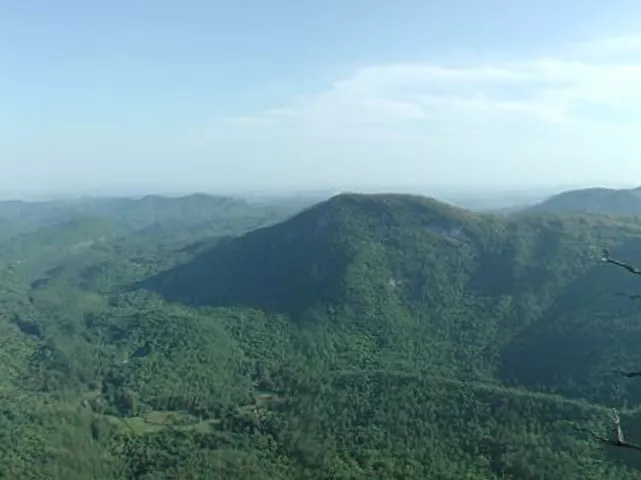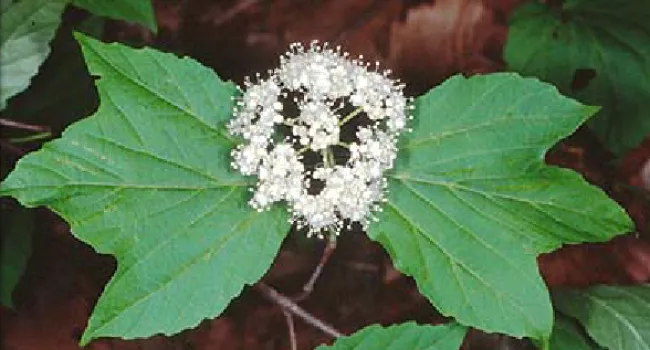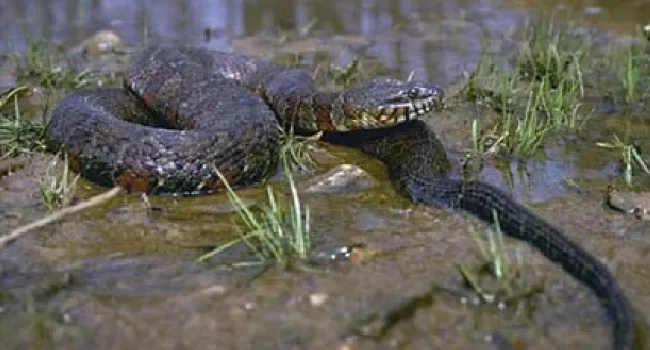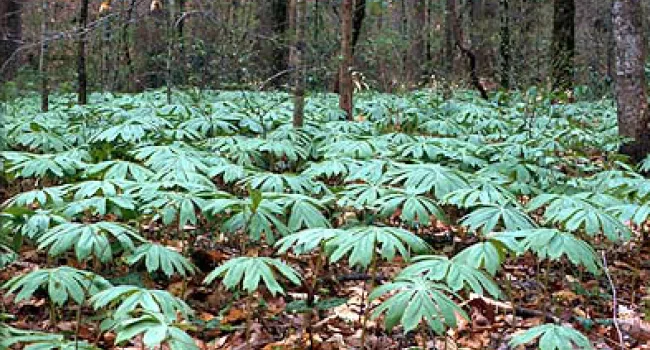
Photo
Trilliums are easily recognized by having a single whorl of three leaves and one conspicuous flower. The large white flowers of this species are initially white but change to pink as the flower ages...
Cove forests are unique ecosystems found exclusively in North America, in the southern Appalachian Mountains of the United States. They are a special type of forest known as mixed deciduous, meaning that forest's trees lose their leaves in fall. Cove forests are restricted to mountain "coves," which are bowl-shaped valleys with very rich, fertile, damp soil. Many cove forests have streams wandering through part of the forest. The cove forests of the South exhibit the greatest plant and tree diversity of any forests in the United States.
The cove forests of South Carolina are restricted to the northwest portion of the state, extending from the north of Westminster to north of Greenville, Jones Gap State Park, Table Rock State Park, Oconee State Park, and Caesars Head State Park all contain cove forest communities. For more information, view the credits or find out how to plan a trip to a cove forest.
---
PLEASE NOTE:

Photo
Trilliums are easily recognized by having a single whorl of three leaves and one conspicuous flower. The large white flowers of this species are initially white but change to pink as the flower ages...
Photo
A good way to begin unravelling the riddles of nature is to ask "Why?" questions. Why are mosquitoes generally most active in the early morning and evening hours? Why do maples have winged fruits, as...
Photo
(Viburnum acerifolium) This small clump-forming shrub that has three-lobed leaves that resemble maple leaves, hence the common name. Maple-leaf viburnum has showy clusters of white flowers that give...
Photo
(Podophyllum peltatum) This widespread herb forms dense carpets on the forest floor in early spring. Single large white flowers with yellow centers hang down beneath the large umbrella-like leaves...
Photo
Cove forests are also called "mixed mesophytic forests." The term, "mixed mesophytic forest" refers to a mixture of tree species adapted to relatively cool, moist environments and rich soils...
Photo
(Nerodia sipedon) This aquatic snake is usually found in slow moving bodies of water. This snake is often found basking on logs in the water or on rocks close to the body of water. Fish and amphibians...
Photo
Cove forests typically have deep nutrient-rich soils that are less acidic than surrounding areas. A favorable soil, coupled with a relatively cool, moist environment, promotes a rich diversity of...
Photo
(Shortia galacifolia) A small evergreen species related to galax with white flowers produced in March. It was discovered ty the French botanist Andre Michaux in 1787 growing at the confluence of the...
Photo
In remote rugged areas, where logging proved difficult, small remnant patches of intact cove forest still exist. Here, one may encounter unusually large trees with wide trunks, some of which may be...
Photo
(Seiurus aurocapillus) This bird requires mature hardwood forests for successful breeding. Often observed walking on the leaf litter of the forest floor searching for insects. Its call is heard as a...